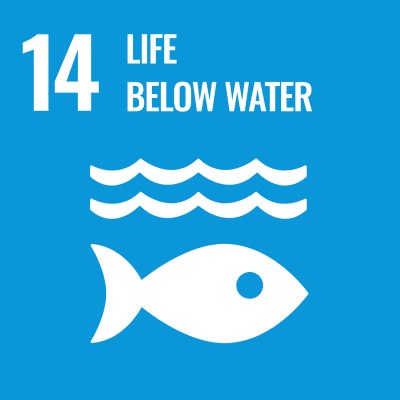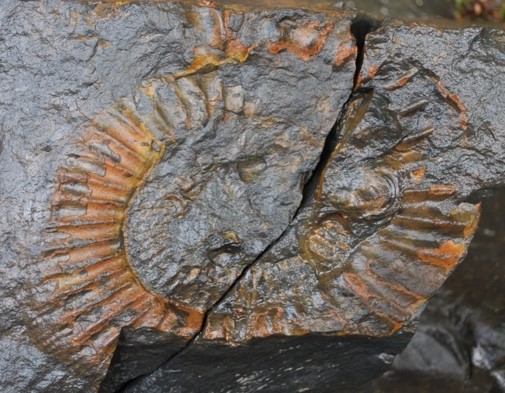-
Faculty of Biosphere - Geosphere Science, Department of Biosphere - Geosphere Science
- Associate professor
- Hiroko UDAKA
- Research Field
Biology, Animal Physiology
- Keyword(s)
Life cycle, insects, slugs, distribution
- Research theme
-
- Seasonal adaptation in insects and slugs
- Cold tolerance in insects and slugs
- Citizen science
Outline of research activities


I am interested in the mechanisms of seasonal adaptation in insects and slugs. Through field collection and laboratory rearing, my research investigates how factors like photoperiod and temperature influence life history traits, their geographic variation, and the physiological mechanisms of cold tolerance. In recent years, I have also been involved in citizen science (project science) initiatives, including surveys on the distribution of newly introduced slug species.
- Desired cooperation
-
- Research on life history and thermal tolerance in insects
- Ecological and taxonomic studies of slug species
-
Faculty of Biosphere - Geosphere Science, Department of Biosphere - Geosphere Science
- Associate professor
- Noriko KIDERA
- Research Field
Animal Ecology, Ethology, Conservation Ecology
- Keyword(s)
Wetland, Amphibians, Reptiles, Islands
- Research theme
-
- Ecology and ethology of amphibians and reptiles
- Evolutionary ecology of marine reptiles
- Assessment of anthropogenic impact on rice field ecosystems
Outline of research activities



How can the population sustain in wetlands where the environment spatially and temporally fluctuates? We study the ecology of amphibians and reptiles in wetlands as target areas. Also, we study the anthropogenic impacts, such as paddy improvement and abandonment, on those populations from the viewpoint of conservation biology as well as ecology and evolution.

- Desired cooperation
-
- Molecular biology
- Long-term monitoring of wetland species
-
Faculty of Biosphere - Geosphere Science, Department of Biosphere - Geosphere Science
- Associate professor
- Okihito YANO
- Research Field
Systematic Botany
- Keyword(s)
Phylogeny, Cytology,Taxonomy, Flowering Plants, Cyperaceaea
- Research theme
-
- Taxonomy of Cyperaceae
- Phylogeny of Cyperaceae
- Cytology of Cyperaceae
Outline of research activities
My research is focused on the diversification and evolution of flowering plants, mainly Cyperaceae (sedges family), ranged from Japan to the Himalayas through China. Cyperaceae is one of the most diversified group in flowering plants, and is suitable for studies of plant systematic and evolution. I have conducted taxonomic, phylogenetic and cytological studies of Cyperaceae.
- Desired cooperation
-
- Taxonomy
- Phylogeny
-
Faculty of Biosphere - Geosphere Science, Department of Biosphere - Geosphere Science
- Assistant professor
- Shintaro UENO
- Research Field
Animal Ecology, Animal Ethology
- Keyword(s)
Freshwater turtle, Sea turtle, Aquatic life, Biodiversity, Conservation
- Research theme
-
- Natural history study on animals, especially turtles
- Elucidation of factors affecting the distribution and species compostion of aquatic life.
- Reproductive isolation mechanisms of turtles
Outline of research activities



We study the natural history of wild animals using ecological and ethological methods. In particular, we study the distribution, diet, and behaviour of freshwater turtles and sea turtles, to understand their lifestyle and to study how human activities affect their lives. Additionally, we are conducting researches to elucidate the mechanisms of reproductive isolation in turtles, where interspecific hybridization is common. We are also interested in the distribution and population structure of aquatic species such as the giant salamander and the finless porpoise.

- Desired cooperation
-
- Conservation of aquatic life
- Biodiversity of aquatic life
- Sustainable use of the environment and resources
-
Faculty of Biosphere-Geosphere Science, Department of Dinosaur Paleontology
- Professor
- Masato FUJITA
- Research Field
Geology, Sedimentology, Plaleontology, Museology
- Keyword(s)
Paleoenvironment, Geological survey, footprint, Museum, Exhibition
- Research theme
-
- Geology, Sedimentology, and Paleontology of the Mesozoic system
- Paleoecology of dinosaurs on the basis of footprints
- Effective museum exhibition techniques
Outline of research activities


Through field-based surveys, I am conducting research to clarify the geology and paleoenvironment of Mesozoic strata distributed in the Hokuriku region. I am also conducting research to clarify ecology of dinosaurs, such as their gait, walking speed, and gregarious behavior, based on dinosaur footprints. We will also be researching effective methods for museum exhibitions that focus on dinosaur fossils.

- Desired cooperation
-
- Research on the protection of fossils exposed in the wild, such as footprint fossils
- Effective museum exhibit techniques using digital technology
-
Faculty of Biosphere - Geosphere Science, Department of Dinosaur Paleontology
- Professor
- Mototaka SANEYOSHI
- Research Field
Geology, Sedimentology, Paleontology
- Keyword(s)
Paleoenvironments, Geological survey, Fossil Taphonomy
- Research theme
-
- Stratigraphy of Upper Cretaceous of Gobi desert, Mongolia
- Late Cretaceous of Dinosaur fossils from Gobi desert, Mongolia and Late Miocene Mammalian fossils from Great Rift Valley in Kenya
- Sedimentation processes of modern River systems
- Paleoenvironments of Miocene sediments in Nagi, Okayama Prefecture
Outline of research activities


I am actively involved in paleontological excavations spanning Mongolia, Kenya, and northern Okayama Prefecture, while simultaneously conducting meticulous paleoenvironmental reconstructions based on robust geological investigations. Moreover, my endeavors extend to the comprehensive reconstruction of the entire ecological framework of the relevant time periods, encompassing small vertebrates, insects, and invertebrates, achieved through the discernment of the intricate interconnections between fossils and their corresponding stratigraphic contexts. Furthermore, our team enthusiastically engages in lifelong learning endeavors, exemplified by organizing exhibitions, workshops, and lectures that showcase esteemed fossil specimens.

- Desired cooperation
-
- -
-
Faculty of Biosphere - Geosphere Science, Department of Dinosaur Paleontology
- Associate professor
- Shoji HAYASHI
- Research Field
Vertebrate Paleontology, Bone Histology, Evolutionary Biology
- Keyword(s)
Dinosaur, Mammal, Bone Histology, Aquatic Adaptation, Ontogeny
- Research theme
-
- Dinosaur Paleobiology
- Secondary adaptation of tetrapods to life in water
- Gigantism and dwarfism of vertebrates
Outline of research activities



Bone histology is the study of bone function and growth by sectioning bones into thin slices to visualize internal tissues. This technique has proven instrumental in uncovering the physiology and ecology of extinct animals, providing insights into their growth rate, age, metabolism, and degree of aquatic adaptation — factors that were previously challenging to reconstruct. My research focuses on employing bone histology to explore the life and adaptive processes of large vertebrates, such as dinosaurs and mammals. Specifically, I aim to uncover what factors influenced these creatures to evolve into giants or diminutive forms and how terrestrial vertebrates altered their physiology and bone structure to successfully readapt to aquatic environments.

- Desired cooperation
-
- Researches on living vertebrates (e.g., ecology, anatomy, and pathology)
- Paleoenvironment researches based on geology
- Vertebrate paleontological researches
-
Faculty of Management, Department of Management
- Professor
- Tetsuo WASHIMI
- Research Field
Tourism Studies
- Keyword(s)
Regional promotion, Tourism industry
- Research theme
-
- Comunity development through tourism
- Locally-led travel planning
- Inbound Traverers Behavior
Outline of research activities



Now that Covid19 has settled down, the diversification of inbound customers will progress. Japan’s tourist areas will be required to be tourist areas that respond to diverse values such as religious diversity such as Halal, veganism, and LGBTQ. It means that each tourist area is required to select the value that is sought and to work on regional development that makes use of the strengths of the area.
Tourism has a broad base and a huge and growing market all over the world. In addition, it is an attractive industry that can realize tourism that benefits all people involved in tourism, including the industry, the business operators, and tourists.
I am interested in researching ways to help realize such a tourist area.- Desired cooperation
-
- To be involved in concrete studies and research on community development related to local tourism
-
Faculty of Management, Department of Management
- Associate professor
- Ryohei TAKAHASHI
- Research Field
Rural Development, Social Innovation
- Keyword(s)
Rural management, Rural innovation, Destination Management/Marketing Organization(DMO)
- Research theme
-
- Sustainability of rural development through a destination management organisation.
- Building a rural development marketing database.
- Role of innovators in regional innovation
Outline of research activities





In response to the crisis of social, cultural, and economic sustainability in rural areas caused by declining birthrates and aging populations, the regional management movement, in which industry, academia, government, and the private sector collaborate to solve problems, has attracted attention.
In this laboratory, we support the construction of marketing databases for tourism marketing organizations that practice regional management, while analyzing the information obtained from these databases and examining effective regional management strategies.
There are two topics in this laboratory,
(1) Research on the relationships and roles among entities in effectively functioning regional management,
(2) Research on the construction of a marketing database that contributes to the formulation of regional management strategies and on evaluation indices for regional management.- Desired cooperation
-
- Developing a marketing database for strategic rural management planning
- Analysis of economic ripple effects of events, etc.
-
Faculty of Veterinary Medicine, Department of Veterinary Medicine
- Professor
- Akihisa HATA
- Research Field
Medical technology, Environmental hygiene
- Keyword(s)
Antimicrobial resistance, Enterobacteria, Arsenic, Analytical technique
- Research theme
-
- human and animal clinical testing technologies
- Research on antimicrobial resistance bacteria based on the One Health Concept
- food safety and functionality
Outline of research activities


We not only analyze the health status of humans, animals, the environment, and food, but also develop new testing methods to evaluate them.
In recent years, we have been conducting joint research with local governments and companies to develop processing methods to reduce food loss and add value to food ingredients, to evaluate the pharmacokinetics of functional ingredients in foods, and to develop new testing methods for inflammation markers.- Desired cooperation
-
- blood test
- bacteriological test
- food testing
-
Faculty of Veterinary Medicine, Department of Veterinary Medicine
- Professor
- Hiroshi YOKOYAMA
- Research Field
Fish pathology
- Keyword(s)
Fish parasite, Food hygiene, Winemaking
- Research theme
-
- Biology of fish-parasitic myxozoans and microsporidians
- Control measures of myxozoan and microsporidian diseases
- Diagnosis of fish parasites in seafoods
- Evaluation of administering grape pomace, effluent from winemaking, on immunity in cultured fishes
Outline of research activities



We study on the biological characteristics of fish parasites with the aim of disease control. Also, many fish parasites in seafoods have been subject to complaints by comsumers. However, fish parasites normally live in wild environments, and it is crucial to discriminate between harmful and harmless for humans.
To improve the quality of farmed fishes, we try to feed grape pomace, effluent from winemaking, on the immunity and health condition in cultured fishes.
- Desired cooperation
-
- Control measures of parasitic diseases in fish farms
- Diagnosis of fish parasites in seafoods
- Improvement of cultured fishes by feeding grapa pomace
-
Faculty of Veterinary Medicine, Department of Veterinary Medicine
- Professor
- Masumi ETO
- Research Field
Professor of Veterinary Medicine
- Keyword(s)
Physiology, Biochemistry, Molecular Biology
- Research theme
-
- Smooth muscle, artery, digestive tract, cell signaling, CPI-17
- Establishing veterinary medical engineering field
- Coordinating Himepet, a pet-related industrial cluster
Outline of research activities





Smooth muscle cells are major components of the organ walls of organs, such as artery, gastrointestinal tract, bladder and trachea. Smooth muscle cell motility is highly regulated by nerve and hormonal stimuli. Accumulating lines of evidence suggest that impaired smooth muscle motility is involved in a variety of diseases, such as hypertension, digestive dysfunction, asthma, and dysuria. To elucidate the molecular basis of smooth muscle diseases, and to develop their effective diagnostic and therapeutic strategies, we have been studying the mechanisms that regulate smooth muscle motor function. Meanwhile, we have discovered a protein that regulates smooth muscle contractile function and have elucidated the underlying mechanism by which the protein mediates regulation of smooth muscle motility. We now study the signals in smooth muscle disease.
In parallel with our research on smooth muscle disease, we are assisting in the development of devices and products to improve the quality of life of animals, including pets, and their owners through collaborative research.- Desired cooperation
-
- Translational research in organ failures
- R&D in pet-related devices and products
-
Faculty of Veterinary Medicine, Department of Veterinary Medicine
- Professor
- Ryusei KUWATA
- Research Field
zoonosis, infectious diseases,
- Keyword(s)
zoonosis, wild animal, viruses
- Research theme
-
- Epidemiology for zoonotic diseases
- Transmission mechanisms and molecular biology of zoonotic diseases
- Ecology of wildlife and disease vectors
Outline of research activities




Among infectious diseases caused by pathogenic microorganisms such as viruses and bacteria, we are studying zoonoses, which are infectious diseases between animals and humans. In recent years, with the increasing distance between animals and humans and the improvement of diagnostic techniques for pathogenic microorganisms, it has become clear that a variety of zoonoses exist in the world and pose a significant threat to us and human society. Our research contributes to the prevention and control of these zoonotic diseases by clarifying how these pathogenic microorganisms are actually maintained in the field and the degree of risk they pose to humans and animals. We also conduct molecular biological studies using actual pathogens and various types of cultured cells to evaluate pathogenicity and elucidate the mechanisms of pathogen transmission.

- Desired cooperation
-
- Biotechnology (for vaccine development and diagnosis)
- Pathology
- Reserch on wildlife
-
Faculty of Veterinary Medicine, Department of Veterinary Medicine
- Professor
- Toshiyasu MATSUI
- Research Field
Neuroanatomy, Veterinary Anatomy
- Keyword(s)
Nervous System, Olfaction, Neuroanatomical Tracing, Cholinergic Neuron
- Research theme
-
- Neuronal connections of the reticular formation
- Morphology of cholinergic interneurons
- Comparative anatomy of the amphibian olfactory system
Outline of research activities

Mastication and swallowing are patterned movements that are essential for the vital activities of animals including humans. These movements require coordinated activity of orofacial muscles, and interneurons in the brainstem control the activity of motor neurons in the orofacial motor system. Among brainstem interneurons, we are focusing on cholinergic interneurons and studying their cell morphology, neural circuits, and neurotransmission. By elucidating the neural circuits between interneurons and motor neurons, we aim to gain knowledge that will lead to an understanding of orofacial movement disorders.
We are also studying the histology of the olfactory organ and its center, the olfactory bulb, of urodele amphibians. By comparing the olfactory system between urodelan species, we are investigating the relationship between the adaptation to water and land environments and the olfactory evolution.

- Desired cooperation
-
- Histological analysis of animal tissues
- Evaluation and development of medical devices using animal anatomy
-
Faculty of Veterinary Medicine, Department of Veterinary Medicine
- Associate professor
- Akira Goto
- Research Field
Farm Animal Veterinary Medicine
- Keyword(s)
Theriogenology, Preventive veterinary medicine
- Research theme
-
- Evaluation of production problems using production records.
- Improving reproductive performance of cattle
- Bovine clinical case study
Outline of research activities

Prospective veterinary medicine for farm animals should endeavor to augment productivity by incorporating strategies to combat production maladies, all the while actively contributing to the prevention and containment of infectious diseases. Through a focused emphasis on theriogenology and herd health management, our aim is to undertake research endeavors that elucidate the etiology, mechanisms, and pathogenesis of diseases in both individual animals and populations, with the overarching objective of advancing diagnostic and therapeutic methodologies.

- Desired cooperation
-
-
Faculty of Veterinary Medicine, Department of Veterinary Medicine
- Associate professor
- Fumiyo SAITO
- Research Field
Toxicology, Molecular biology, Risk analysis
- Keyword(s)
Hepatotoxicity, Gene expression analysis, Omics analysis, Molecular pathways
- Research theme
-
- Mechanism analysis of hepatotoxicity and nephrotoxicity
- Mechanism analysis of inter-organ coordination on energy metabolism
- Biomarker Search in Canine Frailty
Outline of research activities



Despite being primarily developed for industrial purposes and not intended for direct human consumption, many chemical substances still come into contact with the human body and organisms in the environment through various pathways, such as water, air, and other environmental factors. Ensuring a safe and secure society requires a thorough evaluation of the toxicity of pharmaceuticals and chemical substances.
In our laboratory, we conduct research on the toxicity of chemical substances through comprehensive gene expression analysis and obtain omics data to elucidate the molecular-level mechanisms, a field known as toxicogenomics. In addition to utilizing omics technology for understanding the inter-organ coordination of energy metabolism in vivo, our research also focuses on elucidating pathological processes in both humans and dogs.
- Desired cooperation
-
- Data science (machine learning, data mining, etc.)
- Various disease models (genetically engineered animals, clinical samples, etc.)
-
Faculty of Veterinary Medicine, Department of Veterinary Medicine
- Associate professor
- Hidekazu TAKAHASHI
- Research Field
Environental health, Public health
- Keyword(s)
Environmental Microbes, Pollutants, Data analysis
- Research theme
-
- Microorganisms and pollutants in water and soil etc.
- Analysis of disease data, public data, etc.
Outline of research activities




We mainly conduct research related to environmental health. We are working on microorganisms, viruses, contaminants, etc. that exist in water and soil. We also aim to search for useful microorganisms that can contribute to solving environmental problems. We also conduct research using epidemiological and informatic methods.
- Desired cooperation
-
- Instrumental analysis
-
Faculty of Veterinary Medicine, Department of Veterinary Medicine
- Associate professor
- Hirohito OGAWA
- Research Field
Virology, Micorobiology, Zoonosis
- Keyword(s)
Viruses, Bacteria, Infectious Diseases, Epidemiology, One Health
- Research theme
-
- Epidemiological investigations of zoonotic diseases
- Establishment of mammalian cell lines and diagnostic methods for infectious diseases
- Studies on host specificity of viruses
- Studies on endogeneous virus-like elements
Outline of research activities


Changes in the global environments have increased incidence of infectious diseases. Most of these diseases are zoonoses which are transmitted from animals to humans. It is an urgent task to control and prevent of zoonotic disease outbreaks. However, it is not simple and straightforward, since the natural reservoir animals and the transmission routes of the causative agents are not elucidate in all zoonoses. From a glocal perspective, the objective of this project is to forestalling outbreaks of zoonotic infection on the basis of epidemiological investigations in Shikoku.
Host specificity of infectious agents are interested because the mechanism is different for each infectious agent. Adenoviruses are believed to be co-evolved with their specific hosts, and usually infect one particular or several, closely related host species. However, certain bat adenoviruses exhibited a broad range of in vitro cell tropism. We try to elucidate its host-range determinants.- Desired cooperation
-
- Pathology
- Mass spectrometry
- Bioinformatics
-
Faculty of Veterinary Medicine, Department of Veterinary Medicine
- Associate professor
- Tsuneyuki MASUDA
- Research Field
Animal health and hygiene
- Keyword(s)
Livestock chronic infection, Bovine viral diarrhea, Enzootic bovine leukosis
- Research theme
-
- Effect of chronic infection on productivity
- Establish a model to prevent the spread of BLV and BVD
- Study of insect pest-control using natural maerials
Outline of research activities

Infectious livestock diseases, such as highly pathogenic avian influenza recognized as acute infection that cause tremendous damage to the livestock industry. Acute infections develop relatively early and have significant clinical symptoms, making outbreaks easily recognizable. Conversely, chronic infections that decrease livestock productivity, such as enzootic bovine leukosis (BLV) and bovine viral diarrhea (BVD), have become problematic in recent years. Generally, eradication of chronic infections is extremely difficult and requires considerable time and effort.
I want to study the Effect of these diseases on the livestock industry using field cases, and want to research the viable approach of preventing the spread of BLV and BVD. I also study environmentally friendly insect pest-control using natural materials, such as commercially available diatomite product.- Desired cooperation
-
- Veterinary epidemiology
- Virology
- Theriogenlogy
-
Faculty of Veterinary Medicine, Department of Veterinary Medicine
- Lecturer
- Shin-ichi NAKAMURA
- Research Field
Veterinary Pathology, Toxicologic Pathology, Zoo and Wildlife Medicine, Veterinary Forensic Medicine
- Keyword(s)
Diagnostic Pathology, Experimental Pathology, Veterinary Forensic Medicine, Investigation of the cause of the death
- Research theme
-
- Pathological analysis of spontaneous diseases in various animals
- Pathological evaluation of studies using various animal models of disease
- Investigation of the cause of the death in animals
Outline of research activities



Veterinary pathology is the study of the causes of animal diseases and the study of their mechanisms. The results revealed by veterinary pathology are returned to clinical practice to help diagnose and treat animal diseases. Although our research targets all kinds of animals other than humans, we also contribute to the human medicine through basic research using laboratory animals.
I have experience in pathological diagnosis in a variety of animals, including companion animals, industrial animals, laboratory animals, wild animals, exotic animals, zoo and aquarium animals, fish, and invertebrates. I aim to identify issues from spontaneous diseases seen in various animals and to conduct research that can be fed back to clinical practice. At the same time, I will develop basic research using experimental pathological methods.- Desired cooperation
-
- Investigation of the cause of the death in animals
- Research on elucidating the mechanisms of various animal diseases.
- Studies on the isolation and identification of pathogens and the analysis of trace elements.






